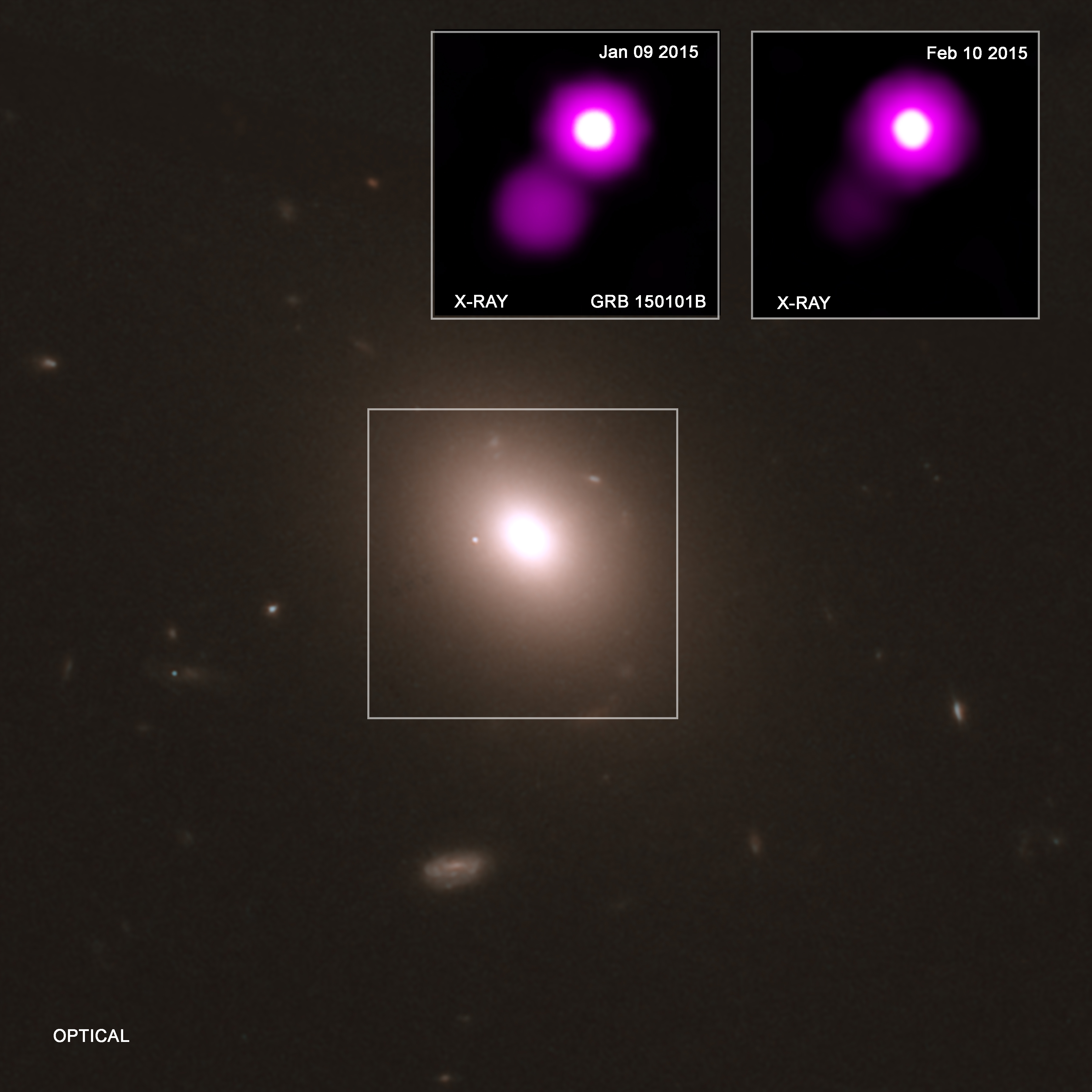
Cataclysmic mergers of the superdense stellar corpses known as neutron stars may be common across the cosmos, a new study suggests.
Last October, an international team of researchers made an astonishing announcement: They had detected both light and gravitational waves generated by the crash of two neutron stars, an event dubbed GW170817 (because it had been observed on Aug. 17, 2017).
The discovery opened the age of "multimessenger astronomy" — the use of electromagnetic radiation combined with gravitational waves (the ripples in space-time first predicted by Albert Einstein a century ago) to probe cosmic objects and phenomena. [Gravitational Waves from Neutron Stars: The Discovery Explained]
GW170817 was the first documented neutron-star merger. But it now appears to have some company.
In January 2015, NASA's Fermi Gamma-ray Space Telescope detected a powerful burst of high-energy gamma rays in a galaxy 1.7 billion light-years from Earth. Shortly thereafter, a number of other instruments observed this source, known as GRB 150101B. ("GRB" is short for "gamma-ray burst.") Among those follow-up scopes were NASA's Hubble Space Telescope, the Chandra X-ray Observatory and Neil Gehrels Swift Observatory, as well as the Discovery Channel Telescope at Lowell Observatory in Flagstaff, Arizona.
The combined observations revealed key similarities between GW170817 and GRB 150101B. For example, both events produced unusually short-lived and faint gamma-ray bursts, bright-blue visible light that lasted for several days and more protracted X-ray emissions, study team members said. And both sources reside in elliptical galaxies with stars that are a few billion years old, with no obvious star-forming regions.
So, the team thinks GRB 150101B was probably generated by a neutron-star merger as well. (Neutron stars result when giant stars die in supernova explosions. The remnants of the largest stars collapse into black holes; stars that started out slightly smaller end up as neutron stars, which pack more than the mass of the sun into a sphere just 12 miles, or 20 kilometers, across.)
Get the Space.com Newsletter
Breaking space news, the latest updates on rocket launches, skywatching events and more!
"We have a case of cosmic lookalikes," study co-author Geoffrey Ryan, of the University of Maryland at College Park (UCMP), said in a statement. "They look the same, act the same and come from similar neighborhoods, so the simplest explanation is that they are from the same family of objects."
And going from one detected object to two is a big deal, said study lead author Eleonora Troja, of NASA’s Goddard Space Flight Center in Greenbelt, Maryland, and UCMP.
"Our discovery tells us that events like GW170817 and GRB 150101B could represent a whole new class of erupting objects that turn on and off in X-rays and might actually be relatively common," Troja said in the same statement.
The team did not observe gravitational waves from GRB 150101B. The Advanced Laser Interferometer Gravitational-Wave Observatory (LIGO) wasn't operating back in January 2015, and, even if it had been, it probably couldn't have picked up waves from such a distant source, study team members said. (GW170817, which was observed by both Advanced LIGO and its European counterpart Virgo, occurred just 130 million light-years from Earth.)
Without gravitational-wave measurements, researchers cannot say for sure how massive the two GRB 150101B objects were. So, it's possible that the merger involved a neutron star and a black hole, study team members said.
"We need more cases like GW170817 that combine gravitational wave and electromagnetic data to find an example between a neutron star and black hole. Such a detection would be the first of its kind," co-author Hendrik Van Eerten, of the University of Bath in the United Kingdom, said in the same statement. "Our results are encouraging for finding more mergers and making such a detection."
The new study was published online today (Oct. 16) in the journal Nature Communications. You can read a preprint of it for free at arXiv.org.
Mike Wall's book about the search for alien life, "Out There," will be published on Nov. 13 by Grand Central Publishing. Follow him on Twitter @michaeldwall. Follow us @Spacedotcom or Facebook. Originally published on Space.com.
Join our Space Forums to keep talking space on the latest missions, night sky and more! And if you have a news tip, correction or comment, let us know at: community@space.com.

Michael Wall is a Senior Space Writer with Space.com and joined the team in 2010. He primarily covers exoplanets, spaceflight and military space, but has been known to dabble in the space art beat. His book about the search for alien life, "Out There," was published on Nov. 13, 2018. Before becoming a science writer, Michael worked as a herpetologist and wildlife biologist. He has a Ph.D. in evolutionary biology from the University of Sydney, Australia, a bachelor's degree from the University of Arizona, and a graduate certificate in science writing from the University of California, Santa Cruz. To find out what his latest project is, you can follow Michael on Twitter.
